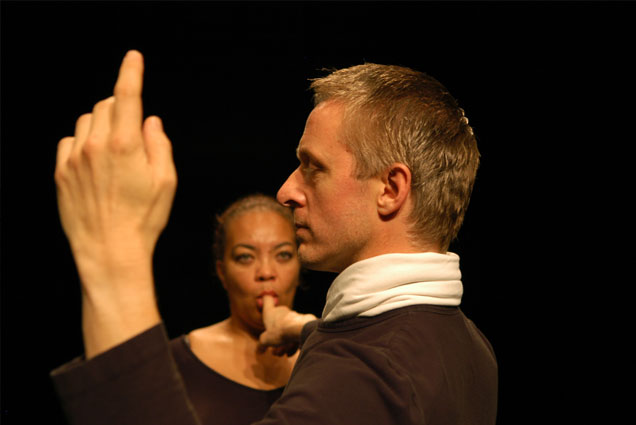| SCENA
CONTEMPORANEA / contemporary scene . |
|
|
|
|
| 2
+ 3.6 2008 Teatro Metastasio h 21.30 HERMAN DIEPHUIS (F) DALILA ET SAMSON (prima nazionale / italian premiere) ingresso / ticket € 7 |
|
|
ideazione e coreografia / conception and choreography: Herman Diephuis “Dalila et Samson, par exemple” rappresenta la voglia di scrivere una sorta di oratorio/ danza per un uomo e una donna. La cura del corpo nell’universo esuberante e carnale dei quadri di Rubens e Jordaens, il rigore e il pudore dei ritratti olandesi del 17 secolo e la musica dell’epoca sono gli elementi che hanno ispirato lo spettacolo. Il Barocco, che si trova nella relazione stessa della coppia, sbilancia tutto ciò che è convenzionale per arrivare a uno stato di parossismo che porta inevitabilmente a un ribaltamento dei ruoli, a una confusione dei generi e a un disordine della percezione. Lo spettacolo si nutre di questi temi presenti nella pittura,appropriandosi liberamente delle rappresentazioni pittoriche e musicali dei personaggi, coppie mitiche e bibliche al fine di giungere a quello che potremmo chiamare un barocco minimalista (Herman Diephuis). -----------------------------------
|
